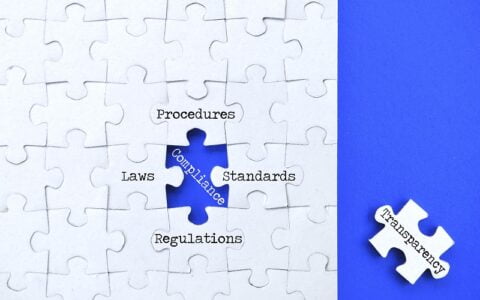
If you are an SMSF accountant or financial adviser, or an SMSF trustee grappling with the intricacies of binding death benefit nominations (BDBNs), we can help you.
SMSF Engine are experts in all aspects of self-managed super fund administration. Our in-depth experience of self-managed super funds stretches back to 2004.
Our major clients are SMSF accountants and financial advisers. We lift the administrative load of managing multiple funds and leave accountants and advisers free to give strategic and investment advice to their clients.
We offer an SMSF establishment service, making sure that your SMSF is set up correctly and all your documentation is in place. We have a deed of variation service to ensure that trust deeds are updated to align with the latest legislation and regulations and ensure the validity of BDBNs.
See our fees for Establishment and Deed Services
Get a quote for bulk SMSF deed update
Let’s understand why these services are essential.
A common misconception is that death benefits in an SMSF will automatically be distributed according to the deceased member’s will.
This is not true.
They will be distributed according to the discretion of the remaining trustee(s), taking into account the trust deed and superannuation law. The deed must be followed, even if it is different to the member’s will.
Fortunately, SMSF members can control what happens to their superannuation benefit through a binding death benefit nomination (BDBN).
If there is a valid BDBN, the super fund trustee must pay the nominated person(s). Payment can be a lump sum (in cash or a transfer of assets) or a pension.
As for many things with SMSFs, everything is not as simple as it seems.
The answers can be complicated, but if you get them wrong, there is a risk that your superannuation fund benefits will go to the wrong beneficiary.
In addition, SMSFs must go to the High Court to challenge any distributions, rather than to the Superannuation Complaints Tribunal like other super funds. This can be very expensive and time-consuming.
This is an area where trustees should seek professional advice.
A binding death benefit nomination is a notice given by a member to the trustee detailing how and to whom death benefits are to be distributed.
To be valid:
To be legally binding:
If there is any non-compliance, the nomination becomes non-binding, and the remaining trustee(s) may have discretion about how benefits are paid.
An SMSF member can also make a non-binding nomination, making suggestions but leaving the decision-making power with the trustee (often the spouse).
However, trustees do not have absolute discretion. (More on this later)
Let’s look at binding death benefit nomination SMSF requirements in more detail.

Only superannuation dependants or a legal personal representative can be beneficiaries.
Superannuation dependants are
Definitions for these categories are given in Section 10(1) of the Superannuation Industry (Supervision) Act, 1993 (SIS Act).
An interdependency relationship is characterised by:
There is still an interdependency relationship if these requirements are not met because either party has a physical, intellectual, or psychiatric disability.
You do not meet the definition if one party is employed to provide domestic support and care.
A legal personal representative is defined in SIS 10(1), as
If the BDBN nominates the legal personal representative, the death benefit will be included in the deceased’s estate and distributed in terms of the will.
Find out more about enduring power of attorney
An SMSF trust deed sets out the governing rules for establishing and operating the fund. A binding death benefit notice is not legally binding if it contravenes one of the rules or if there is not a rule that allows for it.
Some considerations are crucial for ensuring the validity of a binding death nomination:
SMSF deeds must specifically indicate that BDBNs are permitted and how they should be executed. Silence on the subject does not mean that trustees will follow the deceased member’s wishes.
There is some debate about whether SMSFs are required to renew BDBNs every three years.
According to SIS Regulation 6.17A, a BDBN must be renewed every three years to prevent it from lapsing. This same regulation requires signatures from two witnesses. Some experts believe that this three-year/two witnesses rule applies only to APRA-regulated superannuation funds. It is not a binding death benefit nomination SMSF statutory requirement.
However, to avoid possible challenges to a BDBN, many advisers suggest abiding by the regulation. It is, in any event, wise to regularly check a BDBN to ensure that it remains relevant to the member’s current circumstances. These might include commencing pension, divorce, remarriage, or changes in the dependency status of children.
An SMSF can have a clause in the trust deed allowing for non-lapsing or permanent BDBNs. The BDBN will then remain in place indefinitely unless it is revoked by the member and replaced with a new one.
SMSFs are trusts governed primarily by the Superannuation Industry (Supervision) Act 1993 (SIS Act) and any associated updates or regulations.
The trust deed must reflect the current laws and regulations (including tax and family law). Or the wording must make it clear that trustees will act per the latest legislation.
Section 55A of the SIS Act stipulates that the rules of the fund must not permit the payment of death benefits that in any way deviates from the required standards. If it does, the trust deed itself can be declared invalid.
In addition, the trust deed and the BDBN must be aligned. It might be necessary to update the trust deed before a BDBN is prepared. An SMSF Deed of Variation is used to replace old/obsolete SMSF deeds.
Some pitfalls to avoid:
Be sure to get legal advice from SMSF specialists if you are making any changes.
If a BDBN is valid, the SMSF trustee must abide by the nominations when the SMSF member dies.
If it is not valid for any reason (for example, a nominated beneficiary is a non-dependant), and the trust deed does not give direction, then the trustee can exercise discretion regarding payments.
However, trustees do not have absolute discretion.
For example, there is no discretion if the member was in a retirement phase income stream with a nominated reversionary pensioner (the pension will continue but to a different person). The income stream is contractually paid to that reversionary pensioner.
The next step is to refer to the trust deed. Assuming the deed allows for binding nominations, they are looked at. Then, any non-binding nominations are considered.
If the trust deed gives some direction, it must be followed. For instance, it might state that the benefit has to be paid to the estate. Or it might give discretion to the trustees.
If the benefit is to be paid under trustee discretion, then
Of course, all these decisions can be challenged by anyone who is disgruntled by the outcome.
It’s vital to review trust deeds from time to time. A deed of variation can ensure the governing rules of an SMSF are up-to-date.
At the same time, the BDBN can be aligned with the trust deed.
SMSF members and trustees have peace of mind, knowing that the law and the deed have been considered when making death benefit plans.
Contact SMSF Engine to update your Trust and BDBN documents
Get a quote for bulk SMSF deed updates
Meet our business partners
SMSF Engine has strong ties to Australia’s foremost Tax Advisory body, the National Tax and Accountants’ Association (NTAA).
NTAA has endorsed us as the recommended administrator for their members.
NTAA Corporate is an Incorporated Legal Practice with in-house solicitors to oversee the establishment of and variations to Self Managed Superannuation Funds.
NTAA Corporate also specialises in the establishment of Companies and Trusts.

When a member of an SMSF passes away, payment of their death benefit can be problematic if their estate plan […]

The number one reason people choose self-managed super funds over public or retail ones is control over their assets and […]
Keep up to date with all the latest SMSF news and updates by subscribing to SMSF Engine’s newsletter.